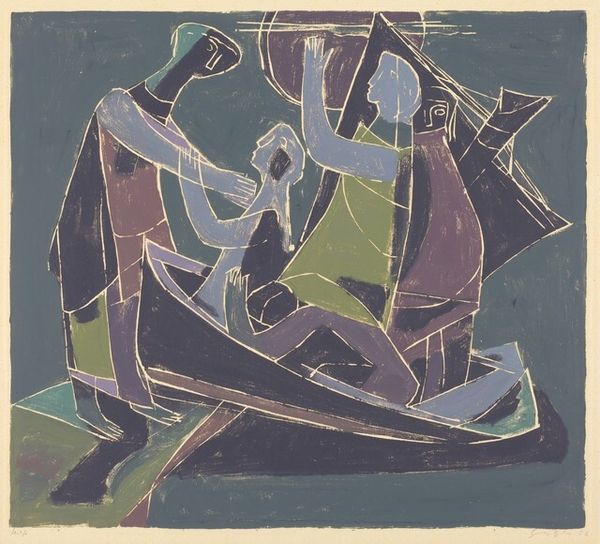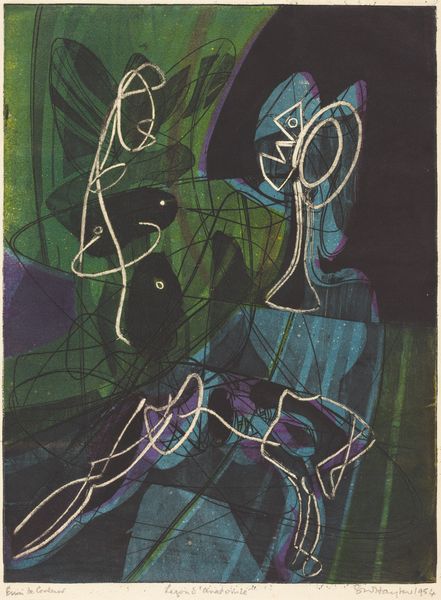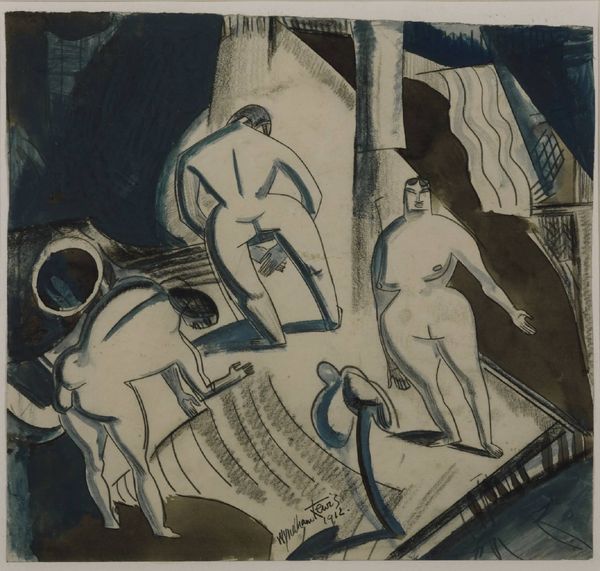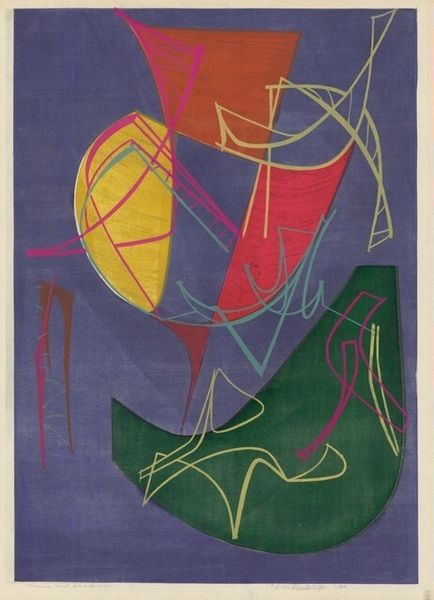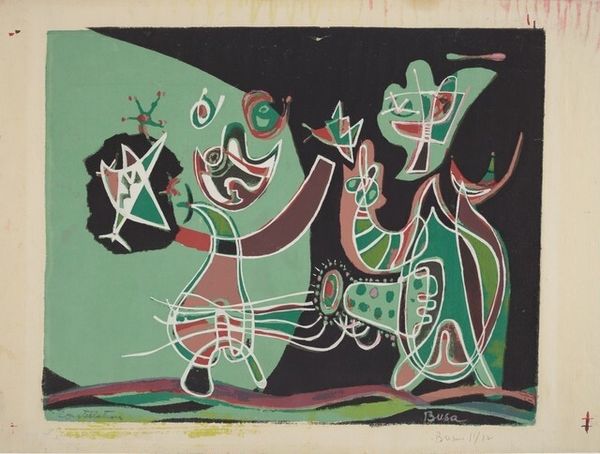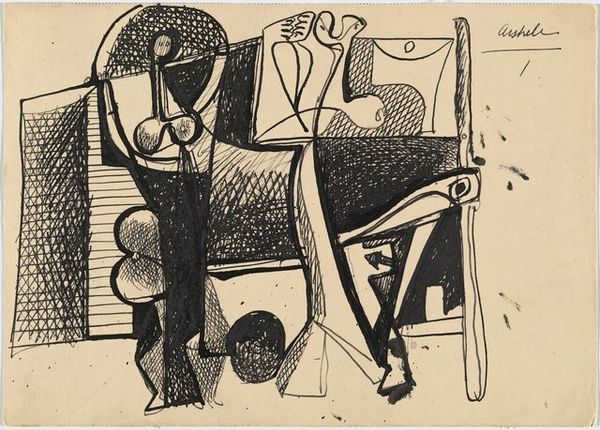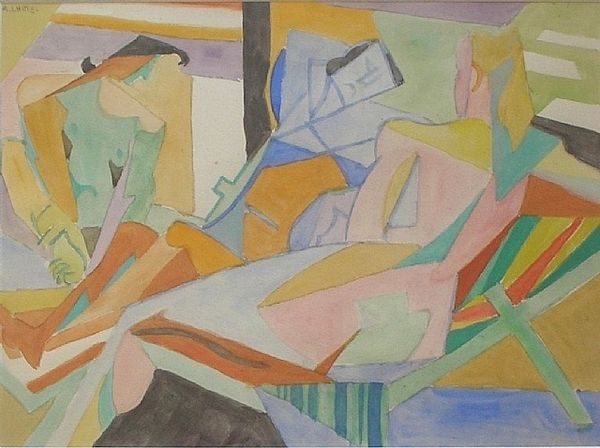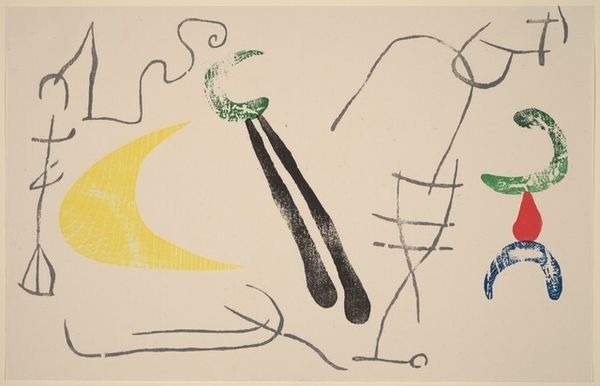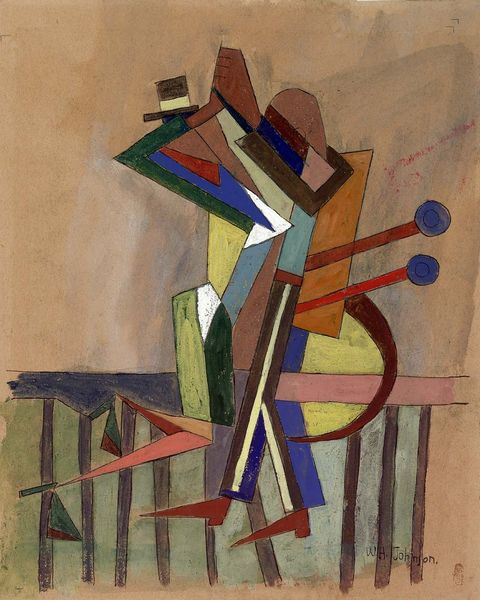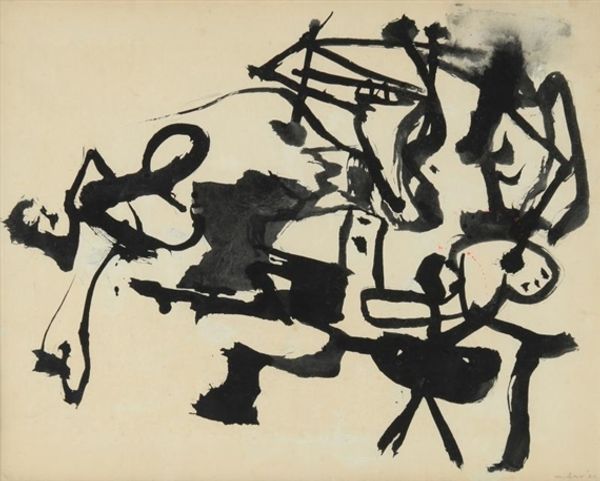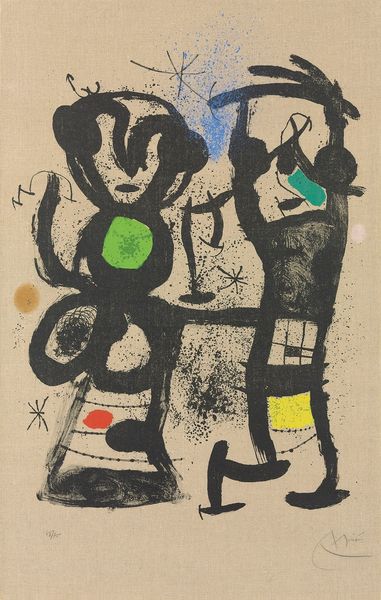
print, woodcut
#
abstract-expressionism
# print
#
form
#
geometric
#
woodcut
#
abstraction
#
line
Dimensions: Image: 302 x 355 mm Sheet: 382 x 459 mm
Copyright: National Gallery of Art: CC0 1.0
Curator: Looking at Louis Schanker’s “Wall Handball,” a 1942 woodcut, what captures your attention first? Editor: The angularity, definitely. And the green—it's almost aggressively present, like a stark stage for these abstracted figures. It feels both energetic and unsettling, if that makes sense. Curator: It does. Schanker was working during a time of enormous upheaval; the Second World War had a profound impact. Considering his turn toward abstraction, especially compared to earlier social realist pieces, can we see this fragmentation as reflective of societal anxieties and changing social structures? Editor: Absolutely. Handball, at its heart, is about confined energy and controlled violence, mirroring the tensions of wartime. Look at the abstracted players: fragmented limbs, reduced to geometric forms. It's as if their very bodies are being broken down, atomized by conflict, which has emotional links with similar work by people like Grosz. Curator: And yet, even with the fractured forms and dissonant angles, there is movement, an implied trajectory, a dotted line indicating a ball in motion. Do you see symbolic meaning in this juxtaposition? Editor: Certainly. The fragmented body is a recurring motif representing not just loss but resilience. It is also possible this “ball” is intended to show the cyclical violence experienced across this era of repeated war, like an echo bouncing back at those who deal it. Perhaps a cultural call for peace rather than “playing along”? Curator: It's also worth noting the material. As a printmaker, Schanker engaged with a medium readily accessible and reproducible, inherently democratic. He also would have had greater public access. Editor: Good point. This makes the symbolism of war and body more publicly open, with more view to its themes being understood across social boundaries. It is much more politically penetrating and subversive if its social critique could be shared openly and freely with others. Curator: It does prompt us to question how historical context, cultural memory, and even a simple game can intertwine to shape artistic expression. Editor: Indeed. Schanker uses that tension to present his symbolic players. A striking statement, when viewed through a psychological and historical lens.
Comments
No comments
Be the first to comment and join the conversation on the ultimate creative platform.
